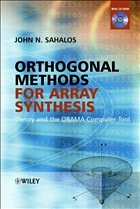
Channel-Adaptive Technologies and Cross-Layer Designs for Wireless Systems with Multiple Antennas
Theory and Applications

PAYBACK Punkte
74 °P sammeln!
Channel Adaptive Technologies for Wireless and Mobile Networking with Single/Multiple Antennas provides complete coverage of the latest theories (joint application of queuing theory and information theory) and practical industrial design considerations for communication systems with various levels of feedback. The book includes examples of popular wireless systems, such as TDMA, wideband CDMA, 3G1x and UMTS. Finally, the book includes in-depth discussion of several advanced topics such as wideband scheduler and applications to OFDM systems.
This innovative book sets forth two promising wireless approaches that support high-quality, high-speed data and multimedia service-multiple antenna technologies and cross layer transmitter adaptation designs-while highlighting the relationships and interactions between them. The latest advanced technologies of channel adaptation techniques for wireless communication systems with multiple antennas are thoroughly investigated. The book is divided into three parts, first giving readers a good foundation in underlying theory, then exploring applications as well as advanced topics: * Part 1 examines theoretical aspects of channel adaptation in wireless communications for point-to-point and multi-user systems with multiple antennas * Part 2 focuses on the applications of the channel-adaptive technologies in practical systems such as UMTS * Part 3 delves into topics such as multi-user scheduling for wideband systems, combined queuing theory and information theory, and ad hoc routing Using a hands-on, practical approach, Channel Adaptive Technologies and Cross Layer Designs for Wireless Systems with Multiple Antennas thoroughly covers detailed design considerations that help readers understand how to apply theory to real-world systems. Emphasis throughout the book is on joint optimization across different layers of a communications system based on an integrated approach. Examples of popular wireless systems, such as TDMA, wideband CDMA (UMTS), and HSDPA, are used throughout as practical illustrations. Each chapter ends with a summary that reviews key points and a set of problems that lets readers test their knowledge and continue to develop their skills as they progress to new topics. Figures and tables are also used extensively to help readers visualize complex theory and systems. Combining theory, design, and application into one integrated approach, this is a superior reference for advanced communications theory courses.













